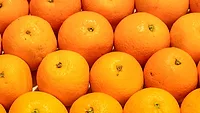Researchers Investigating how Wax Roller Brushes for Produce Affect Microbial Food Safety

Image credit: Dragana_Gordic via Freepik
An ongoing study funded by the Center for Produce Safety (CPS) aims to fill knowledge gaps about the microbial food safety risks posed by wax roller brushes used in fruit and vegetable production facilities. The goal of the project is to provide information about what types of cleaners and cleaning methods work on which types of brushes, and how different wax bases and brushes affect cleaning and sanitation efficacy.
The study is led by Luxin Wang, Ph.D. with the University of California, Davis (UC Davis). She is joined by her UC Davis colleague Gang Sun, Ph.D. as co-investigator.
The existing knowledge gaps about how wax brushes affect microbial food safety were revealed to Dr. Wang during a previous CPS-funded project in which she explored how produce wax itself affects microbial food safety. Industry members revealed their concerns about the cleanability of wax brushes to Dr. Wang during the past study.
For the current project, the researchers first compared brushes of different materials—100 percent nylon versus a 50/50 blend of horsehair and polyethylene—as well as tufted versus spiral-patterned brushes. After inoculating brush samples with pathogens and storing them, the researchers found that, regardless of brush pattern, pathogen populations declined significantly more on the nylon brush material than the 50/50 blend material. Listeria monocytogenes and its surrogate Enterococcus faecium are the pathogens of focus throughout this study.
The researchers also obtained swab samples from waxing roller brushes used in three real-world packinghouses, swabbed before and after cleaning and sanitation, and at three different points throughout the season. These samples will be analyzed to determine which sanitation and cleaning protocols work best for commercial waxing roller brushes.
Additionally, the researchers are looking at the chemical and physical properties of various waxes to find out how they interact with roller brushes of different materials. As part of this work, they will also examine how wax residue affects L. monocytogenes survival on the roller brushes. So far, the researchers have found that horsehair has a higher affinity to wax and tends to keep more wax.
Through laboratory experiments, the researchers will compare and optimize industry-standard cleaning and sanitation protocols for wax roller brushes, and these findings will be validated at the UC Lindcove Research and Extension Center’s pilot packing plant.
Looking for quick answers on food safety topics?
Try Ask FSM, our new smart AI search tool.
Ask FSM →









